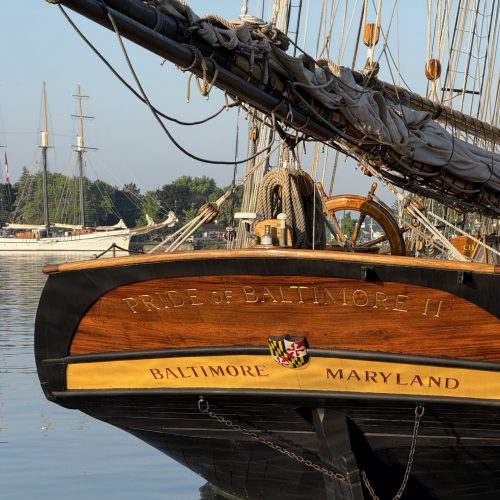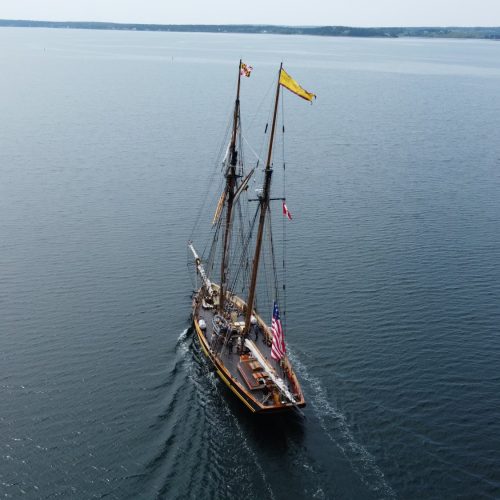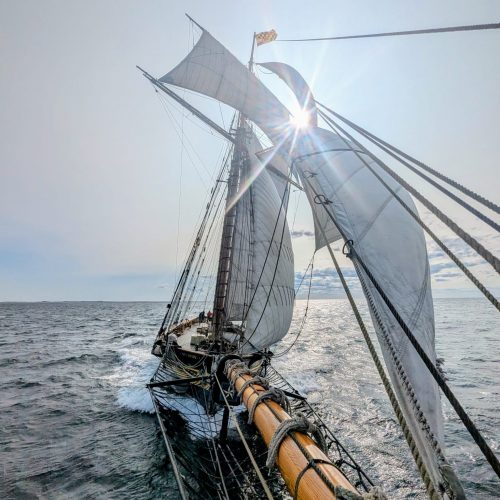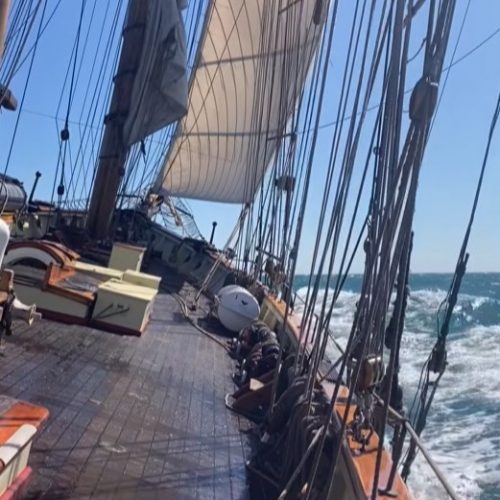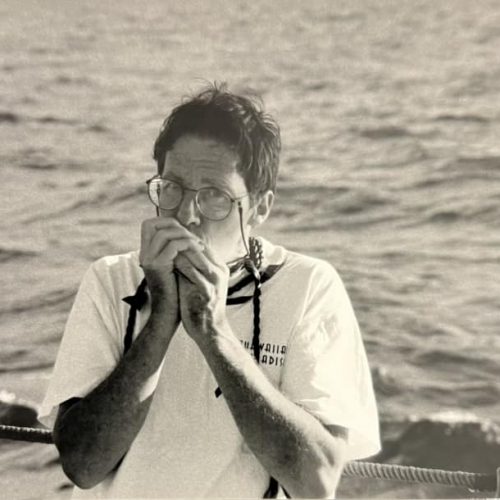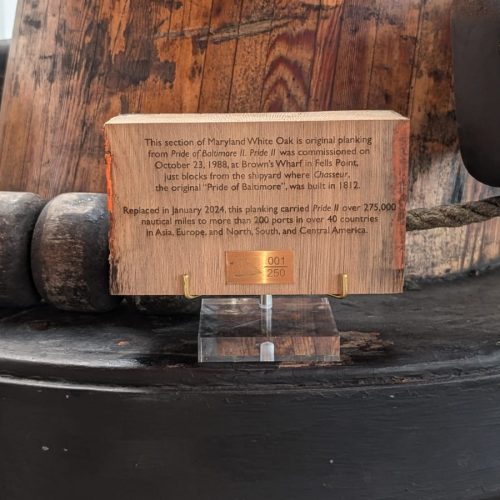June 30, 2020
Dear Friends of Pride,
When I was a kid, my father, a cabdriver, drove me all over Baltimore City to teach me lessons during the time we spent together. He would educate me about communities and warn me about communities I should not go to alone. One such area was the Inner Harbor, where he warned me that, as a young black man, I could find myself in trouble even if it was not my fault. My father said he hoped that someday I could help change that for other young black and brown people. That it was our Inner Harbor, too.
One of the first places my father took me that I can remember in the harbor was aboard Pride of Baltimore II. I loved the water and I loved “pirate ships.” When I told a crew member that it was a cool pirate ship, he corrected me, that it was a privateer, which he explained was like a legal pirate ship. It turns out that this particular crew member was the captain, and he gave me a tour of the ship. He told me the story of Chasseur, a Baltimore Clipper from the War of 1812, which was the inspiration for the design of both Pride and Pride II. That captain could not have known that 30 years later, that 8-year-old kid would become the first black chair of the board of directors of Pride. Nor could he have known (well, maybe he had a hunch) that he would still be the captain of Pride II today. Thank you, Captain Miles, for taking the time to make sure my first impression of Pride was a welcoming one.
As the first black chair of the board of Pride, Inc., which manages the ship built as Maryland’s goodwill ambassador and a symbol of hope, investment, history, and tourism, I knew I must be more than just a symbol of change. I was called upon to be an agent of change. When I became chair in 2018, Pride was in turmoil, having missed the sailing season for the first time ever due to a lack of funding. People told me that everyone would understand if we could not lead Pride back to success because it had been mired in difficulty before my arrival and some had lost hope in it. But they didn’t understand that as a black man, since I was a child, I have always known that my failures are amplified in our society. I couldn’t fail. Nor did our board believe the best days of Pride were behind it.
Our first action was to grow the board because, while we were dealing with our financial troubles, we lost focus on our diversity. We added women, minorities, young people, and new accomplished leaders of different backgrounds and experience. We prioritized connecting the organization back to the myriad communities it serves in Baltimore and across the state. In that vein, we received a Baltimore National Heritage Area grant to get underrepresented communities out on the water for free ($10,000 awarded for 2020 and that program will now take place in 2021). This year, we would have launched an education program to tell the history of the privateer industry, both the good and the bad, and get more kids within the Baltimore City and Anne Arundel County Public Schools systems aboard. I am proud that we pulled off such a historic turnaround and ended the 2019 sailing season with money to invest in expanding our outreach in 2020. While COVID-19 ended many of our initiatives for this year, it has not and will not deter the energy and progress of Pride of Baltimore, Inc., the organization.
So, how do we make Pride of Baltimore II an agent of change? For starters, we plan to work proactively on helping the broader tall ships community acknowledge that many in the black community see it as an industry/sport for whites and not everyone else. Even though my personal experiences have helped me feel that this assumption isn’t true, not all experiences are the same and our actions to be more inclusive speak louder than our words.
I will be asking our board to prioritize finding additional ways to make Pride of Baltimore II an agent of change. This will not be doled out to a committee. It will be addressed thoughtfully by the full board of directors with all of our committees working in concert toward that common goal. We will look to ensure more opportunities for diversity in hiring of crew, staff, vendors, and consultants. We will find more funding for programs that facilitate access for minority communities so that they, too, feel welcomed in the harbors we visit and aboard Pride of Baltimore II. And we will work tirelessly to raise more money to educate communities about job opportunities in sailing and port communities. I will also ask the board to direct our staff to focus more of our grant writing to fund programs that will support underserved communities’ access to our education programs for free. The board, staff, and crew will undertake continual diversity, inclusion, and bias training to ensure that we improve the culture of our organization now and going forward. We will then take our action plan to the entire tall ship community and be an agent of change there, too.
There is a lot of listening, planning, and action to be done over the next few months for Pride to return in 2021, not stronger just for our home city and state, but as a thought and cultural leader for systemic change. Silence is not an option, and listening without action is unacceptable.
If we are truly committed, we need each and every one of you as friends of Pride to support the board, staff, and crew. We want your time, stories, input, and donations to help put these plans into action. I will be joining Captain Miles for a “Coffee with the Captain” in the near future. I welcome your thoughtful attendance and questions.
Fairer winds,
Jay
Jayson T. Williams
Chair of the Board of Directors
Pride of Baltimore. Inc.

